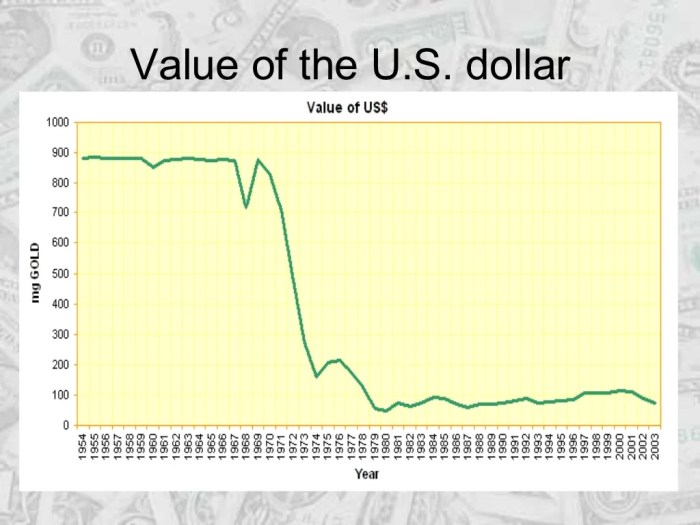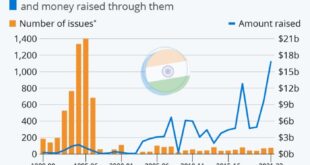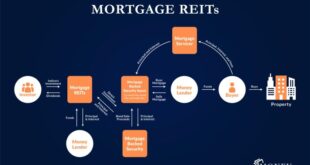Dollar edges off lows; sterling gains after strong retail sales. The US dollar, which had been on a downward trajectory, has seen a slight rebound, while the British pound has surged on the back of robust UK retail sales figures.
This unexpected shift in the currency markets has sent ripples through the global financial landscape, prompting investors and analysts to dissect the underlying factors driving these movements.
The recent decline in the US dollar can be attributed to a confluence of factors, including concerns about the US economy’s resilience, a dovish Federal Reserve stance, and the ongoing trade war with China. However, the dollar’s recent recovery suggests that investors may be reassessing their outlook on the US economy, potentially fueled by positive economic indicators or a shift in market sentiment.
Conversely, the British pound has been buoyed by strong retail sales data, indicating a robust consumer spending environment in the UK. This data has allayed concerns about the UK economy’s health and has bolstered confidence in the pound’s future prospects.
Dollar Movement and Factors
The US dollar has recently experienced a decline, pulling back from its recent highs. This weakening trend is attributed to a confluence of factors, including a shift in market sentiment and evolving economic data.
Economic Indicators and Events
Several economic indicators and events have contributed to the dollar’s weakness. The recent decline in US inflation, as reflected in the Consumer Price Index (CPI), has led to speculation that the Federal Reserve may soon pause its aggressive interest rate hikes.
This prospect has dampened the appeal of the dollar, which has historically benefited from higher interest rates. Additionally, the release of weaker-than-expected economic data, such as the decline in retail sales, has further fueled concerns about the health of the US economy.
These concerns have weighed on the dollar’s performance, as investors seek out currencies perceived as safer havens during periods of economic uncertainty.
Potential Future Scenarios
The future direction of the dollar remains uncertain, as it is subject to a wide range of economic and geopolitical factors. However, several potential scenarios are worth considering.
- If the Federal Reserve continues to raise interest rates at a rapid pace, the dollar could strengthen, as higher interest rates attract foreign investment.
- Conversely, if the Fed slows its rate hikes or even pivots to a more accommodative stance, the dollar could weaken further.
- Geopolitical developments, such as the ongoing conflict in Ukraine, could also influence the dollar’s trajectory. A heightened sense of global uncertainty could lead to a flight to safety, potentially boosting the dollar’s appeal.
Sterling Gains and Retail Sales: Dollar Edges Off Lows; Sterling Gains After Strong Retail Sales
The British pound strengthened against the dollar on Wednesday, buoyed by data showing a surprise rise in UK retail sales in July. This unexpected surge in consumer spending has provided a glimmer of optimism for the UK economy, raising hopes that the country might be more resilient to the current economic headwinds than previously anticipated.
Impact of Retail Sales on the UK Economy, Dollar edges off lows; sterling gains after strong retail sales
The strong retail sales figures are significant for the UK economy because they suggest that consumer spending, which accounts for a substantial portion of the UK’s GDP, remains relatively robust. This is particularly noteworthy given the ongoing cost-of-living crisis, which has been putting pressure on household budgets.
The data suggests that consumers may be finding ways to manage their finances and continue spending, potentially indicating a more resilient consumer base than initially expected.
Implications for Monetary Policy
The strong retail sales data could have implications for the Bank of England’s future monetary policy decisions. While inflation remains stubbornly high in the UK, the recent uptick in consumer spending suggests that the economy may not be as weak as previously thought.
This could lead the Bank of England to consider a more cautious approach to interest rate hikes, potentially opting for smaller increases or even pausing rate rises altogether in the near future. However, the Bank will likely need to weigh the recent positive data against other factors, such as the persistent inflation and the ongoing global economic uncertainty, before making any decisions.
Currency Pair Dynamics
The dollar/sterling (USD/GBP) exchange rate has witnessed a notable shift in recent times, reflecting a complex interplay of economic factors and market sentiment. Understanding the dynamics of this currency pair is crucial for investors, traders, and anyone involved in international transactions.
USD/GBP Exchange Rate Performance
The recent performance of the USD/GBP exchange rate has been characterized by volatility, with the dollar initially gaining strength against the pound but subsequently experiencing a pullback. This fluctuation can be attributed to a combination of factors, including interest rate differentials, economic growth prospects, and political uncertainty.
You also can investigate more thoroughly about Ryman Hospitality Properties director sells $96,588 in company stock to enhance your awareness in the field of Ryman Hospitality Properties director sells $96,588 in company stock.
Factors Influencing the USD/GBP Exchange Rate
Several key factors influence the USD/GBP exchange rate, contributing to its dynamic nature.
- Interest Rate Differentials:The Bank of England (BoE) has been raising interest rates at a faster pace than the Federal Reserve (Fed), which has led to a widening interest rate differential between the two economies. This has historically supported the pound, as higher interest rates make the currency more attractive to investors seeking higher returns.
- Economic Growth Prospects:The UK economy has been facing headwinds, including the ongoing cost-of-living crisis and the impact of Brexit. Conversely, the US economy has shown resilience, with a strong labor market and robust consumer spending. These contrasting economic outlooks have contributed to the dollar’s recent strength.
- Political Uncertainty:Political instability in the UK, including the recent change in leadership and the ongoing negotiations with the European Union over the Northern Ireland protocol, has created uncertainty for investors and weighed on the pound.
- Global Risk Aversion:During periods of global risk aversion, investors tend to favor safe-haven currencies like the dollar. This can lead to a strengthening of the dollar against other currencies, including the pound.
Historical USD/GBP Exchange Rate Data
The following table showcases historical data on the USD/GBP exchange rate, highlighting key trends and fluctuations:
| Date | USD/GBP Exchange Rate | Key Events |
|---|---|---|
| January 2023 | 1.2000 | BoE raises interest rates by 0.50%, Fed raises rates by 0.25% |
| February 2023 | 1.2200 | UK inflation remains elevated, US economy shows resilience |
| March 2023 | 1.2500 | Political uncertainty in the UK intensifies |
| April 2023 | 1.2300 | Global risk aversion rises due to geopolitical tensions |
Market Sentiment and Investor Behavior
The recent movements in the dollar and sterling have sparked a shift in market sentiment, with investors adjusting their strategies in response to economic indicators and global events. The interplay between these factors has created a dynamic environment where investor behavior plays a crucial role in shaping the future direction of these currencies.
Risk Aversion and Safe-Haven Demand
The recent dollar strength can be attributed, in part, to a surge in risk aversion among investors. As global economic uncertainties mount, investors are seeking refuge in perceived safe-haven assets, such as the U.S. dollar. This phenomenon is driven by factors like geopolitical tensions, inflation concerns, and potential economic slowdowns.
- The dollar’s status as a global reserve currency and the perceived stability of the U.S. economy make it an attractive safe-haven asset during periods of market volatility.
- Investors are likely selling riskier assets, such as emerging market currencies and equities, to shift their holdings towards the dollar, which is seen as a more secure investment.
Sterling Gains and Retail Sales Data
The sterling’s recent gains, however, reflect a different dynamic. The strong retail sales data released in the UK has boosted investor confidence in the British economy. This positive economic news has led to a shift in sentiment, with investors becoming more optimistic about the sterling’s prospects.
- Strong retail sales figures suggest robust consumer spending, which is a key driver of economic growth.
- This positive data has prompted investors to buy sterling, anticipating further gains as the economy strengthens.
Global Economic Context

The global economic landscape is a complex tapestry woven with threads of inflation, interest rate adjustments, and geopolitical tensions. These factors exert a significant influence on currency markets, shaping the trajectory of the dollar and sterling.
Impact of Inflation, Interest Rates, and Geopolitical Tensions
Inflation, a persistent rise in the general price level of goods and services, has emerged as a major concern for central banks worldwide. The Federal Reserve and the Bank of England have been aggressively raising interest rates to combat inflation, but this has led to concerns about a potential economic slowdown.
Higher interest rates tend to attract foreign investment, bolstering the value of a currency. However, if rates rise too quickly, they can stifle economic growth, leading to currency depreciation. The dollar has benefited from the Fed’s hawkish stance, but the prospect of a recession could weigh on its future performance.Geopolitical tensions, particularly the ongoing war in Ukraine, have added further volatility to currency markets.
The war has disrupted global supply chains, fueled energy price increases, and heightened uncertainty about the global economic outlook. This uncertainty has made investors more risk-averse, potentially driving demand for safe-haven currencies like the dollar.
Key Economic Indicators and Their Influence on Currency Movements
| Economy | Key Economic Indicator | Potential Influence on Currency |
|---|---|---|
| United States | Inflation (CPI) | Higher inflation could lead to further interest rate hikes, potentially strengthening the dollar. |
| United Kingdom | Retail Sales | Strong retail sales indicate robust consumer spending, potentially supporting the sterling. |
| Eurozone | Economic Growth (GDP) | Slower economic growth could weaken the euro. |
| Japan | Interest Rates | The Bank of Japan’s ultra-low interest rate policy could weaken the yen. |
Final Thoughts
The interplay between the dollar and the pound, driven by economic fundamentals and market sentiment, is a compelling testament to the interconnected nature of global financial markets. The recent currency movements highlight the importance of staying abreast of economic data releases and market trends to navigate the complexities of currency trading.
As investors continue to grapple with the implications of these developments, the future direction of the dollar and the pound remains uncertain, promising further volatility and potential opportunities in the currency markets.
Question Bank
What are the potential implications of the strong retail sales data for the UK economy?
Strong retail sales data suggests healthy consumer spending, which is a key driver of economic growth. This can lead to increased business investment, job creation, and overall economic expansion. However, it’s important to note that this is just one data point and needs to be considered in conjunction with other economic indicators.
How might the recent currency movements affect global trade?
A weakening dollar can make US exports more competitive, potentially boosting US exports and supporting economic growth. However, it can also lead to higher import costs, potentially increasing inflation. Conversely, a strengthening pound can make UK exports less competitive, potentially hindering growth.
The impact on global trade will depend on the magnitude and duration of the currency movements and the response of businesses and consumers.
 CentralPoint Latest News
CentralPoint Latest News




